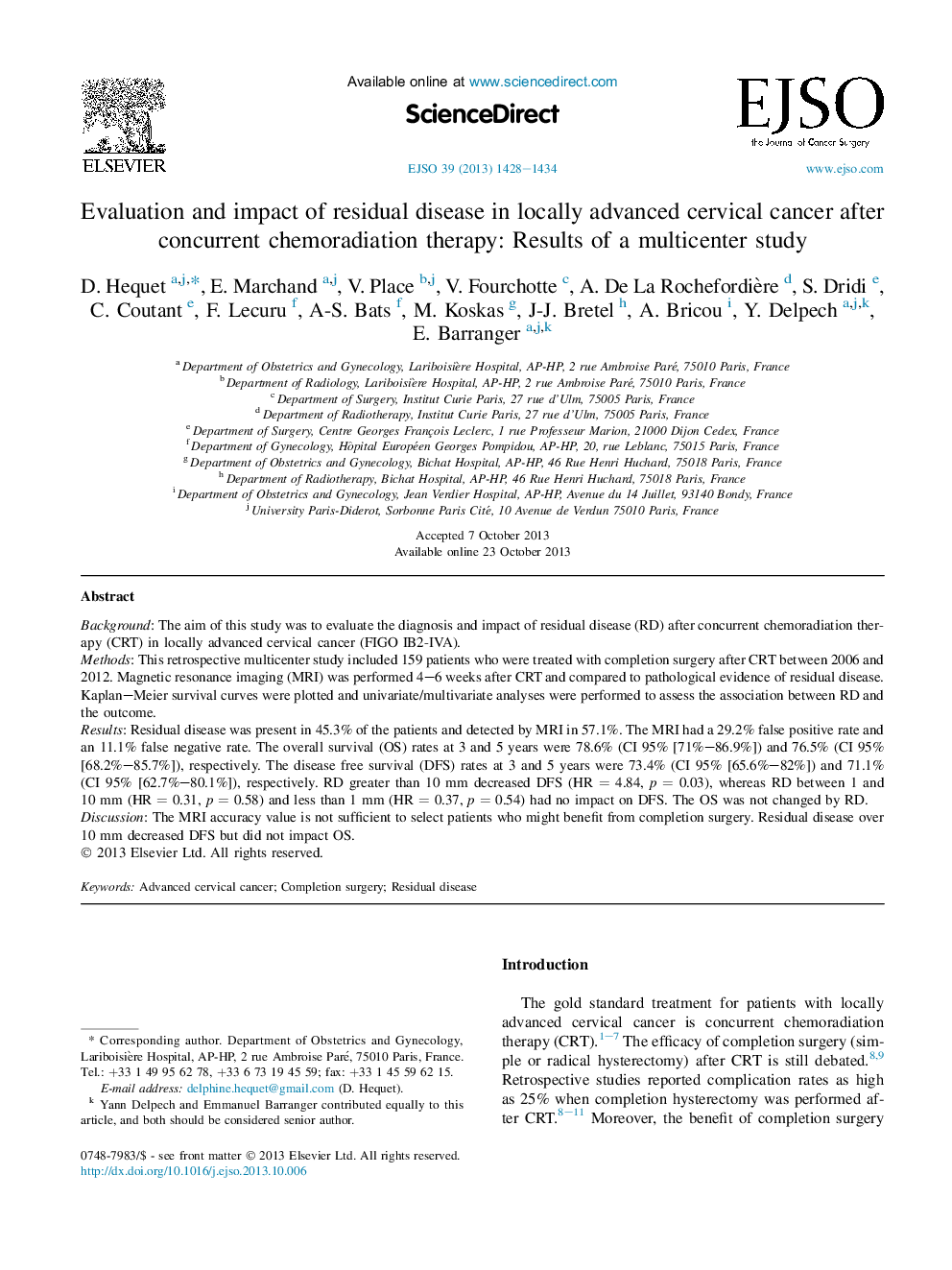| Article ID | Journal | Published Year | Pages | File Type |
|---|---|---|---|---|
| 3985674 | European Journal of Surgical Oncology (EJSO) | 2013 | 7 Pages |
BackgroundThe aim of this study was to evaluate the diagnosis and impact of residual disease (RD) after concurrent chemoradiation therapy (CRT) in locally advanced cervical cancer (FIGO IB2-IVA).MethodsThis retrospective multicenter study included 159 patients who were treated with completion surgery after CRT between 2006 and 2012. Magnetic resonance imaging (MRI) was performed 4–6 weeks after CRT and compared to pathological evidence of residual disease. Kaplan–Meier survival curves were plotted and univariate/multivariate analyses were performed to assess the association between RD and the outcome.ResultsResidual disease was present in 45.3% of the patients and detected by MRI in 57.1%. The MRI had a 29.2% false positive rate and an 11.1% false negative rate. The overall survival (OS) rates at 3 and 5 years were 78.6% (CI 95% [71%–86.9%]) and 76.5% (CI 95% [68.2%–85.7%]), respectively. The disease free survival (DFS) rates at 3 and 5 years were 73.4% (CI 95% [65.6%–82%]) and 71.1% (CI 95% [62.7%–80.1%]), respectively. RD greater than 10 mm decreased DFS (HR = 4.84, p = 0.03), whereas RD between 1 and 10 mm (HR = 0.31, p = 0.58) and less than 1 mm (HR = 0.37, p = 0.54) had no impact on DFS. The OS was not changed by RD.DiscussionThe MRI accuracy value is not sufficient to select patients who might benefit from completion surgery. Residual disease over 10 mm decreased DFS but did not impact OS.
